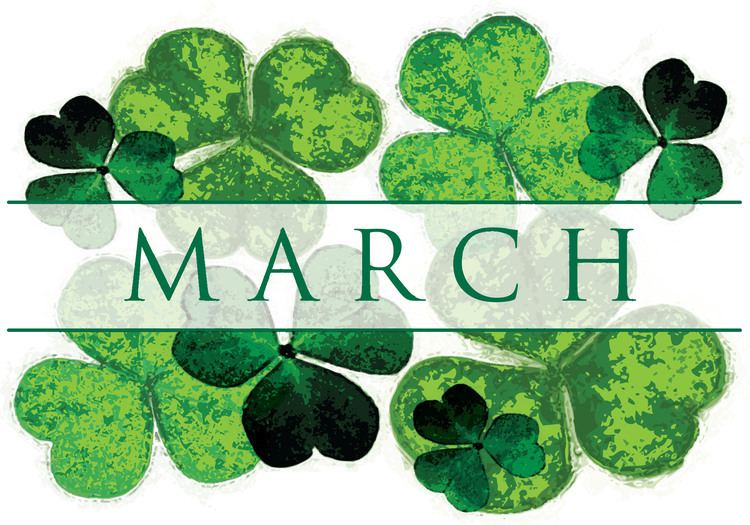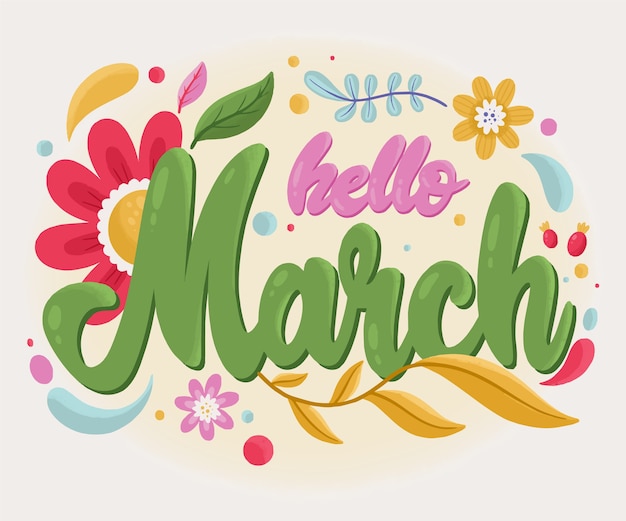Understanding March 31: A Look At The End Of A Unique Month
When you think about the calendar, that, is that, March 31 often feels like a special sort of day. It's the moment when one of the year's more interesting months wraps up, leaving us to consider all that has happened. This particular date marks a turning point for many across the globe, bringing with it different feelings and natural shifts, you know?
You see, March itself is a pretty significant time, actually. It holds a unique position, being the third month of the year, and it's also the first full month of spring for a huge chunk of the world, like folks in North America, Europe, and Asia. Yet, for others, particularly those living in the southern parts of our planet, it actually signals the start of autumn, which is kind of neat, you know?
So, as we get to March 31, it's a chance to pause and think about these different experiences and what this day might mean to you. We're going to explore what makes this date stand out, from its place in the calendar to the very nature of the month it finishes, and stuff.
Table of Contents
- The Month of March: A Time of Transition
- The Meaning Behind the Name
- Looking at the Calendar: March 31 and Beyond
- March and the Home Space
- Common Questions About March 31
The Month of March: A Time of Transition
March, as a month, holds a rather distinct spot in our yearly cycle, wouldn't you say? It's the third month, coming after January and February, and it's the one that, more or less, sets the tone for the seasons to come, depending on where you are on the globe. This period often feels like a bridge, connecting the colder, quieter times with something new and fresh.
The Gregorian and Julian calendars, the systems most of us follow, both agree on March's position. It’s a month that has been recognized for a very long time, carrying historical weight and cultural significance across many different societies. Thinking about it, the way we mark time, like with months, really helps us make sense of the year, doesn't it?
So, as March draws to a close on March 31, it's a good moment to reflect on what this month typically brings. It’s a time when things start to look a little different outside, and people often begin to feel a shift in their daily routines, too. It's a month that holds a lot of different aspects, truly.
A Month of 31 Days
One simple, yet pretty important, fact about March is that it has 31 days. This might seem like just a number, but it actually gives March a bit more length than some other months, for example, those with 30 days or, of course, February with its fewer days. Having that extra day or two can make a difference in how we perceive the flow of time within that period, you know?
A month with 31 days means a longer stretch for things to happen, for plans to unfold, or for the weather to change its mind a few times. It allows for a fuller experience of the seasonal shifts that March brings. It’s a generous month, in a way, giving us more time within its boundaries. When you look at a calendar, you can see that March sits comfortably with its full count of days, giving us plenty of moments to fill.
This consistent length means that March 31 always comes at the very end, marking a clear finish line for the month. It’s a final day that, quite simply, concludes a period of 31 sunrises and sunsets, offering a complete cycle before April steps in. It's just a fact of the calendar, but it shapes how we experience the month, obviously.
Seasonal Shifts Across the Globe
March is a month of rather striking contrasts when it comes to the seasons, especially when you think about different parts of the world. For those of us in the northern hemisphere – that includes places like North America, Europe, much of Asia, and some parts of Africa – March is, basically, the first month of spring. This means we often start to see signs of new growth, maybe some warmer days, and a general feeling of awakening in nature. It's a time when things start to bloom and feel a little lighter, you know?
However, it’s a completely different story for people living in the southern hemisphere. Down there, in places like South America or Australia, March is the first month of fall, or autumn. So, while some of us are seeing flowers appear, others are watching leaves change color and preparing for cooler weather. It's quite interesting how the same month can mean such different things depending on your location, isn't it?
Even in the northern hemisphere, where spring is supposed to be starting, March can still throw some chilly days our way. It's not always sunshine and warmth right from the start; sometimes, a cold spell can linger, reminding us that winter hasn't completely left the building. This mix of lingering cold and emerging warmth makes March a truly dynamic month, full of little surprises, you know, every now and then.
The Meaning Behind the Name
The name "March" itself has a rather interesting story, which, in some respects, tells us a bit about its historical significance. The meaning of "March" can be traced back to words that refer to a "border region." It was, apparently, a term used for a district that was originally set up to defend a boundary. This idea of a border or a boundary is often used in the plural form, too.
So, when we think about the name, it suggests a place of transition, a line between one thing and another. This actually fits quite well with March's role in the calendar, doesn't it? It's a month that stands between winter and spring in one part of the world, and between summer and autumn in another. It’s a time when the seasons are, in a way, crossing a boundary.
This historical meaning gives the month a kind of layered depth, making it more than just a name on a calendar. It points to a time of shifting lines, of things moving from one state to another. It's a month that, literally and figuratively, marks a significant change, you know, a sort of crossing over.
Looking at the Calendar: March 31 and Beyond
Looking at a calendar for March, whether it's for a recent year like 2021 or 2022, or even a future one like 2025, helps us understand the rhythm of the month. We can see the week numbers, which helps us keep track of how far along we are in the year. And, honestly, seeing the sunrise and sunset times for each day in March is pretty neat, as it shows us how the days are getting longer in spring or shorter in autumn, depending on where you are. This is a very clear sign of the seasonal changes.
March 31, being the very last day, marks the completion of this monthly cycle. It's a day that invites us to look back at the 30 days that came before it and also to look ahead to what April might bring. It’s a natural point for reflection and for anticipating the next part of the year. The way the days unfold, one after another, leading up to March 31, shows us the steady march of time, so to speak.
This kind of calendar view, with its detailed daily information, really helps us appreciate the small, consistent changes that happen throughout the month. It’s a reminder that even though the month is ending, the natural world keeps moving, and our days keep changing, too. You can learn more about calendar tracking on our site, which helps with planning.
Daily Changes and the March Calendar
When you glance at a March calendar, you can really notice the small, daily shifts that occur. For instance, the times for sunrise and sunset change a little bit each day. In the northern hemisphere, as spring begins, the sun stays out for longer periods, giving us more daylight hours. This is a subtle but very real change that many people look forward to, as it means more time for outdoor activities or simply enjoying the brighter evenings. It's quite noticeable, actually, by the end of March.
Conversely, in the southern hemisphere, the days are gradually getting shorter as autumn sets in. The sun sets earlier, and the mornings might feel a bit darker. These daily adjustments in light are a consistent feature of March, no matter where you are. They are a clear sign of the Earth's journey around the sun and how that affects our experience of day and night.
Understanding these daily changes, even just by glancing at a calendar, helps us feel more connected to the natural world and the passage of time. It's not just about the big events, but also about the little, steady movements that shape our days. March 31 is the culmination of all those small daily shifts within the month, bringing us to the close of one cycle and the start of another.
Celebrations and Moments in March
March is a month that holds a few well-known celebrations and significant moments, which often add to its distinct feel. Of course, many people think of St. Patrick's Day, which brings a burst of green and festivities for many. But beyond that, March also marks the official start of spring in the northern hemisphere, which is a big deal for those who have been waiting for warmer weather and new life. This shift is something people genuinely look forward to, you know?
Another important event that often falls in March, especially in places like the United States, is Daylight Saving Time. This is when clocks "spring forward," giving us even more daylight in the evenings. It's a change that affects many people's daily routines and can feel like a real sign that the seasons are moving along. These events, combined with the general feeling of the month, make March quite memorable.
The month also carries a lot of history and folklore, with traditions and beliefs tied to its changing weather and the arrival of new seasons. There are often gardening tips that become very relevant in March, as people start preparing their outdoor spaces. And, you know, looking at moon dates or even thinking about birthdays that fall in March adds another layer to its character. It's a month packed with different kinds of happenings, really.
March and the Home Space
March can also be a time when people start thinking about their homes a little differently. As the seasons shift, there's often a natural urge to refresh our living spaces. The month, as a concept, can inspire us to consider new art, maybe some interesting objects, or even practical utility items for the home. It’s a period when the light changes, and perhaps our mood brightens, making us want to bring that feeling indoors.
This could mean simple things, like changing out decor to reflect the lighter, brighter days of spring, or finding new ways to make our homes more comfortable as the weather transitions. The idea of "utility for the home" in March might involve getting ready for outdoor living, or just making sure everything inside is ready for the coming months. It’s about making our personal spaces feel good, you know?
So, as March 31 arrives, it's a good time to think about how the changing season might influence your home life. Perhaps it's a prompt to do some spring cleaning, or to simply appreciate the shift in natural light that comes with the end of the month. It's a gentle reminder that our surroundings, just like the calendar, are always moving and changing, and we can adjust our living spaces to match. We also have more information on home organization tips on our site.
Common Questions About March 31
People often have questions about specific dates, and March 31 is no exception. Here are some common things people wonder about this particular day and the month it concludes:
Is March 31 considered a holiday in the United States?
Generally speaking, March 31 is not a federal holiday in the United States. While March itself contains events like the start of spring and sometimes Daylight Saving Time, March 31 itself doesn't typically mark a widely observed public holiday. You can check specific calendars for 2024 or 2025 to see if any local observances happen to fall on that date, but it's not a standard day off for most people.
How many days does the month of March have?
March, according to both the Gregorian and Julian calendars, consistently has 31 days. It's one of the seven months of the year that has this number of days, providing a full and complete month before April begins. This is a fixed characteristic of the calendar year.
What season is March in for different parts of the world?
March is a month of seasonal transition that varies by hemisphere. In the northern hemisphere (places like North America, Europe, and much of Asia), March is considered the first month of spring. However, in the southern hemisphere (including South America and parts of Africa), March marks the first month of fall or autumn. It's quite interesting how the same month can bring such different seasonal experiences depending on your location on the planet. For more details on global weather patterns, you might want to look at a reputable source like the National Oceanic and Atmospheric Administration (NOAA) website, for example.

March - Alchetron, The Free Social Encyclopedia

Hello march Vectors & Illustrations for Free Download | Freepik

A Teacher's Touch: March Smartboard Calendar